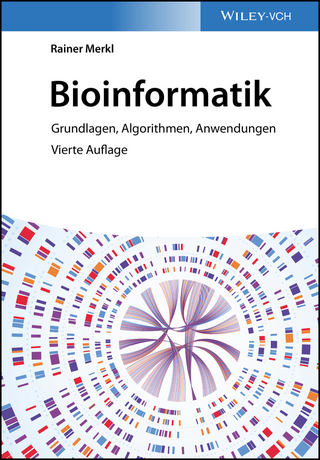
Genome Transcriptome and Proteome Analysis
John Wiley & Sons Inc (Verlag)
978-0-470-84955-2 (ISBN)
- Lieferbar (Termin unbekannt)
- Versandkostenfrei innerhalb Deutschlands
- Auch auf Rechnung
- Verfügbarkeit in der Filiale vor Ort prüfen
- Artikel merken
Genome Transcriptome and Proteome Analysis is a concise introduction to the subject, successfully bringing together these three key areas of research. Starting with a revision of molecular genetics the book offers clear explanations of the tools and techniques widely used in genome, transcriptome and proteome analysis. Subsequent chapters offer a broad overview of linkage maps, physical maps and genome sequencing, with a final discussion on the identification of genes responsible for disease. An invaluable introduction to the basic concepts of the subject, this text offers the student an excellent overview of current research methods and applications and is a good starting point for those new to the area.
A clear, concise introduction to the subject of modern genomic analysis
A technology-oriented approach including the latest developments in the field
Invaluable to those students taking courses in Bioinformatics, Human Genetics, Biochemistry and Molecular Biology
Alain Bernot is a graduate of the École normale supérieure, PHD, and Professor at the Université d'Evry. He is currently working in a genetic therapy programme at Genethon. He previously directed the sequencing and analysis of a vertebrate genome (Tetraodon nigroviridis), and contributed to the identification of a gene responsible for a human genetic disease (Mediterranean familial fever).
Preface. About the Author.
Acknowledgements.
Introduction.
1. General introduction.
1.1 Revision of molecular genetics.
1.2 The tools of molecular biology.
1.3 Specifics of the genome programmes.
1.4 The species analysed.
2. Linkage maps.
2.1. Tools and methods in genetic mapping.
2.2 The development of genetic maps.
2.3 Radiation hybrid maps.
2.4 Conclusion.
3. Physical maps.
3.1 Local maps or small genomes.
3.2 Strategies for physical mapping of the human genome.
3.3 Maps of the human genome.
3.4 Conclusion.
4. Genome sequencing .
4.1 Strategic choices.
4.2 Prokaryotic genomes.
4.3 Genomes of model eukaryotes.
4.4 The human genome. & lt;div>
4.5 Conclusion.
5. Sequencing cDNA and the transcriptome.
5.1 Strategies of cDNA sequencing.
5.2 The economic stakes.
5.3 The analysis of cDNA sequences.
5.4 The transcriptome.
5.5 Conclusion.
6. The proteome.
6.1 Basic techniques.
6.2 Transgenesis .
6.3 Mutagenesis.
6.4 Two-dimensional electrophoresis and identification of proteins.
6.5 Identification of protein interactions by twin hybrids.
6.6 Chip technology.
6.7 Analysis of three-dimensional structure.
6.8 Conclusions.
7. Identification of genes responsible for disease.
7.1 Genetic diseases.
7.2 Functional cloning and chromosomal anomalies.
7.3 Strategy for positional cloning.
7.4 What is the future for the cloning of disease-causing genes?
7.5 Conclusion.
General Conclusion.
Further Readiing.
Index.
| Erscheint lt. Verlag | 17.9.2004 |
|---|---|
| Verlagsort | New York |
| Sprache | englisch |
| Maße | 154 x 217 mm |
| Gewicht | 369 g |
| Themenwelt | Informatik ► Weitere Themen ► Bioinformatik |
| Naturwissenschaften ► Biologie ► Genetik / Molekularbiologie | |
| ISBN-10 | 0-470-84955-X / 047084955X |
| ISBN-13 | 978-0-470-84955-2 / 9780470849552 |
| Zustand | Neuware |
| Haben Sie eine Frage zum Produkt? |
aus dem Bereich


